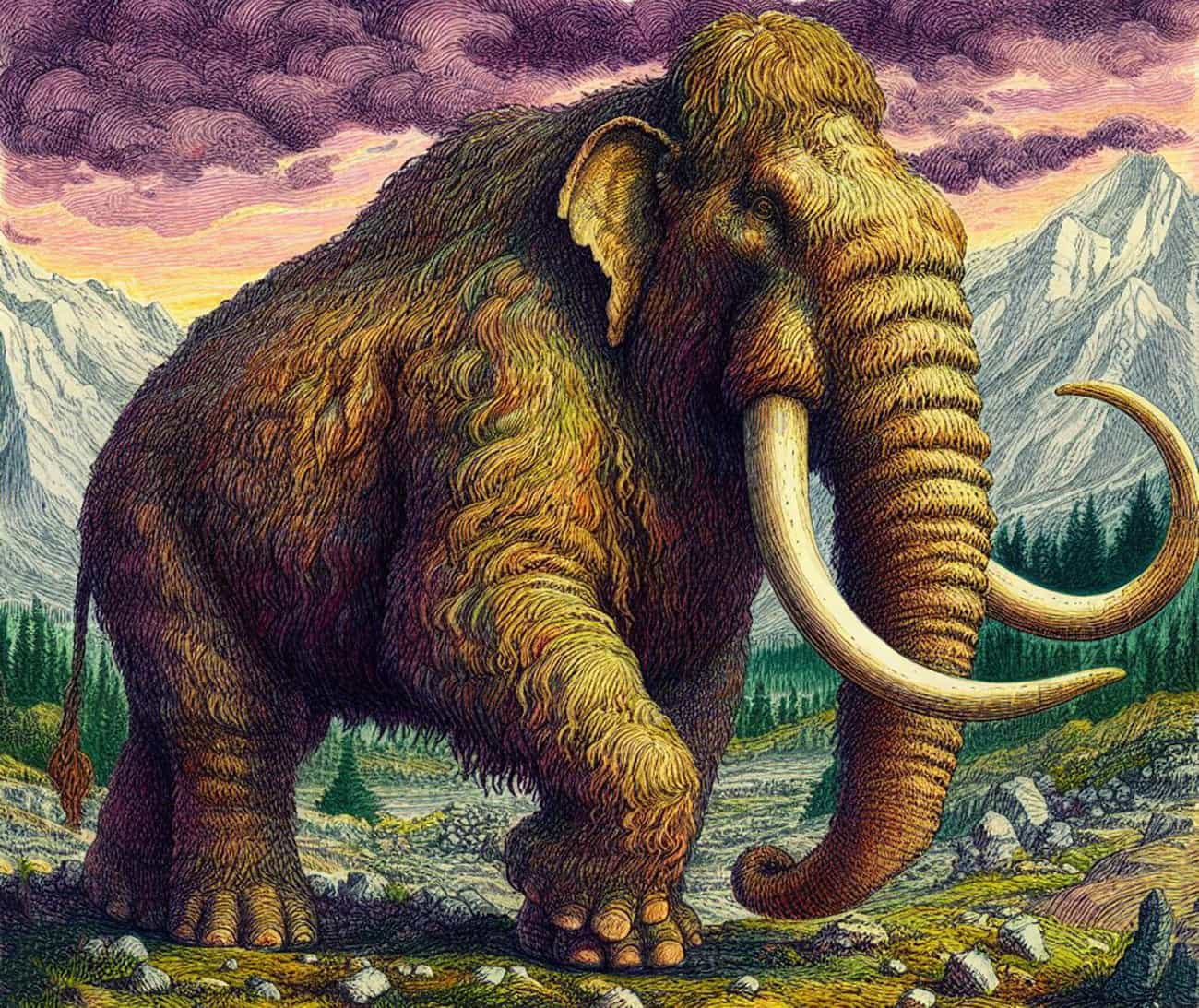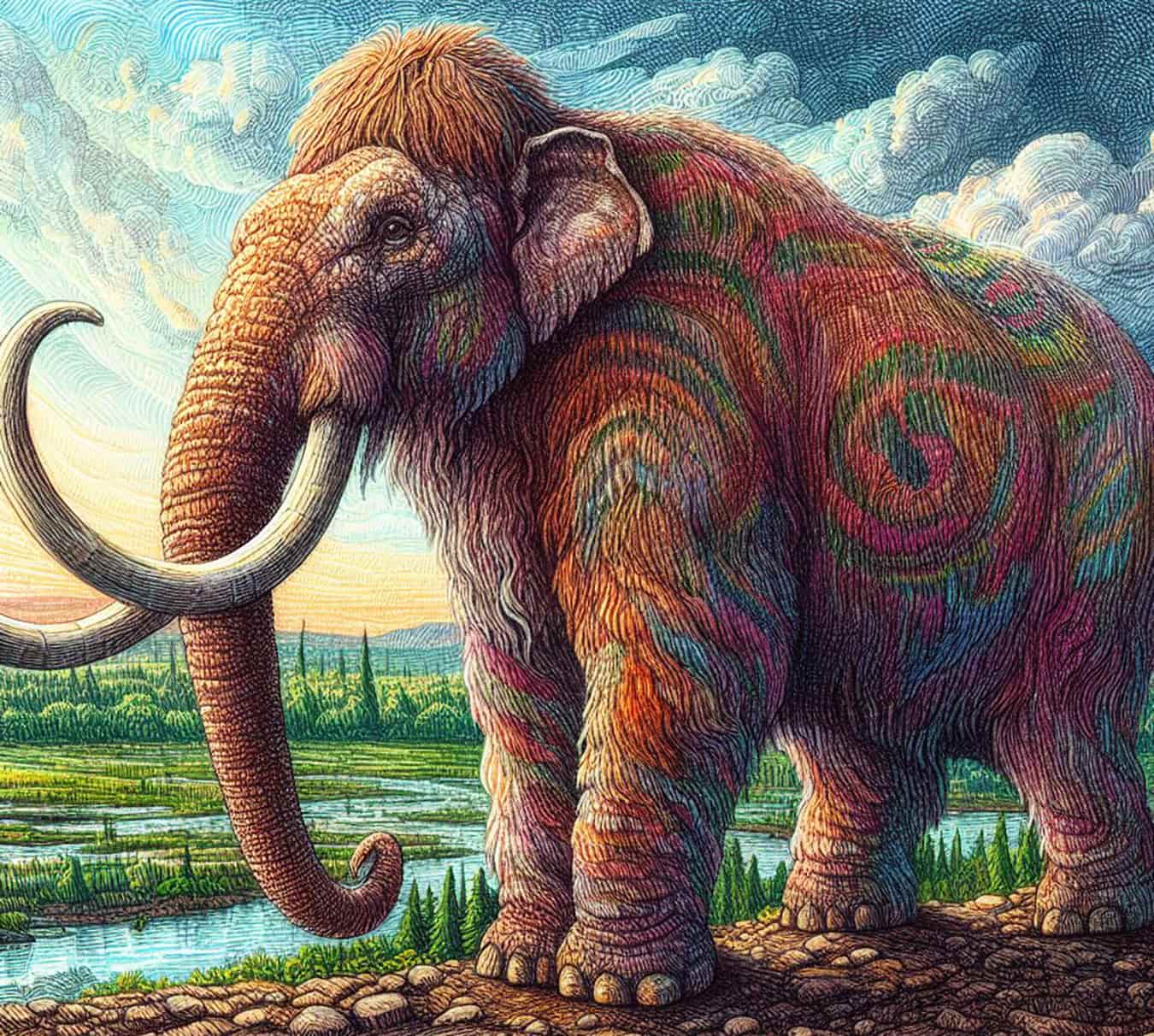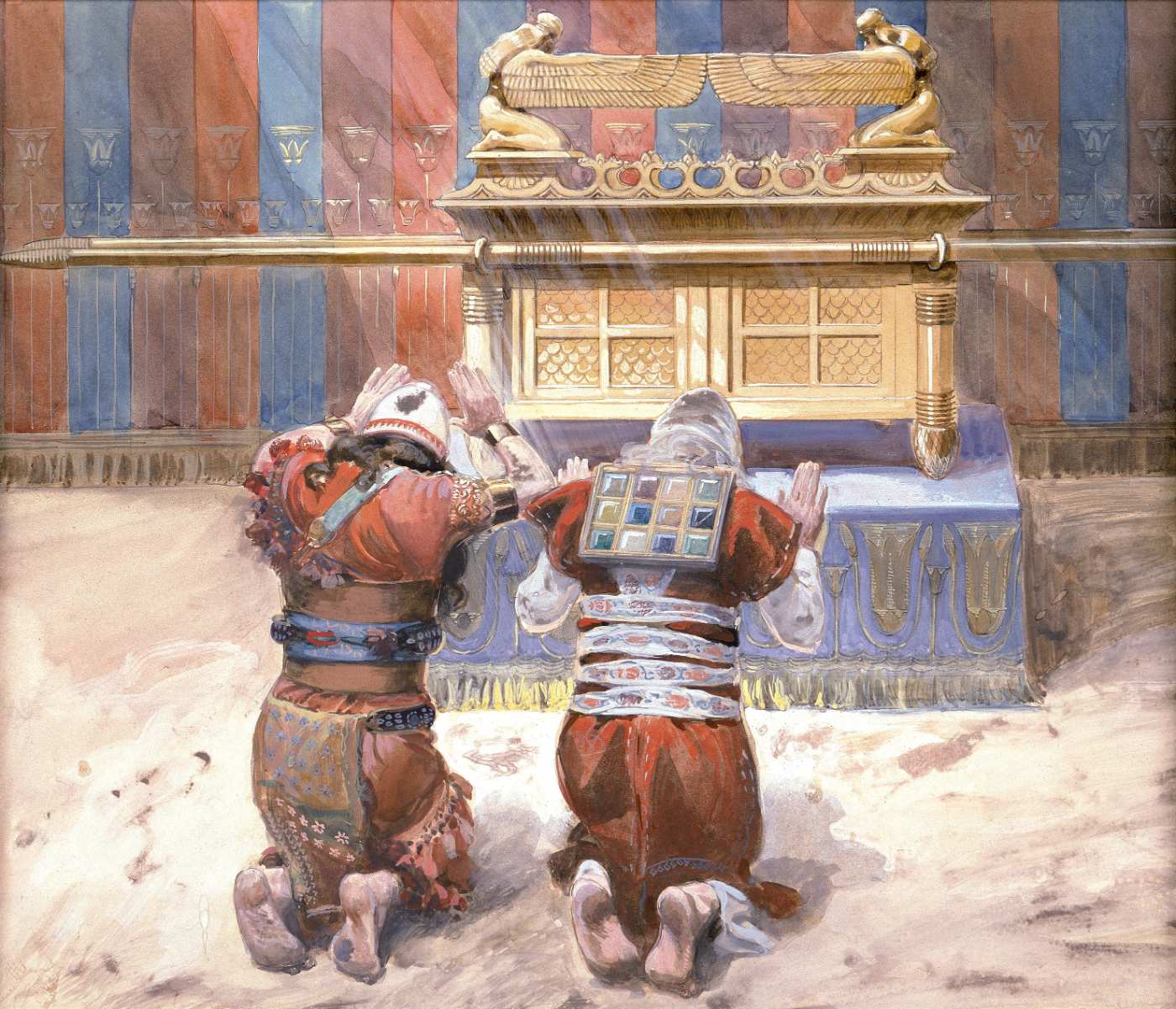- Mammoths symbolize the underworld and appear in Siberian and Asian folklore.
- They cause earthquakes and form rivers in Siberian mythologies.
- Feared and revered, mammoths embody various creation myths.
The mammoth is a legendary creature that appears in the folklore of Siberian and Asian cultures. In many stories, it lives in the depths of the earth or at the bottom of lakes and rivers, where it towers over other creatures. It is said to build riverbeds and cause earthquakes by digging a tiny tunnel into the ground with its horns. A prominent mythical creature in Siberian myths, sometimes depicted as a chimera, a hybrid monster, it represents an important creature of the underworld.
The History of the Mammoth Legends
Northerners often uncovered mammoth skeletons in riverbed deposits. Items such as bone handles and pipes were made from these mammoth bones. Thus, the name of a legendary creature was likely associated with the actual mammoth itself due to its enormous bones.
The Mythopoeic Image: Its Origins and Its Sources
Representations of mammoths are common in art from northern Eurasia, China, and other nearby countries, and they may be used to recreate the mythopoetic picture. The earliest of these images was discovered in the La-Madelaine cave in France. Myths, folklore, folktales, beliefs, omens, and anything else passed down from generation to generation in these areas all play a role in piecing together the mythopoetic picture.
Evenki tales of the mammoth creating snakes and the earth, shamanic tales of mammoths entering the water and churning sand, earth, and stones with their tusks, the belief in a mammoth standing in the cosmic ocean and supporting the world, etc., all belong to the category of creation myths. Other types of mammoth stories include etiological tales that explain geographical features or the origin of a particular tradition; and metamorphosis myths (where the mammoth is a “transformed” animal).
Legendary Mammoths in Many Cultures

The mammoth, in the minds of many Siberians and Far Easterners, is a terrifying and mysterious beast, the biggest known animal (the weight of five or six elks). It avoids the light of day and instead makes its home in dark places, such as the sediment of lakes and rivers. The Nenets think it creates a short passageway underground with its horns and may be heard roaring from below the ground. The mammoth has the potential to trigger earthquakes, riverbed formation, riverbank collapse during floods, terrible cracking sounds when ice breaks during ice drifts, and more. It can run fast and survive on a diet of plants and dirt.
The mammoth was present in the prehistoric era in the origin myths of the Komi (called the “earthly deer”), Nenets, and Ob Ugrians. Because of its weight, it dug itself a hole in its breast. Riverbeds and streams were shaped by its actions. The land was completely submerged in water after a while. The Komi, who are acquainted with the story of Noah and the deluge from the Bible, say that the mammoth sought to take shelter in Noah’s ark but was too big. The beast then attempted to swim in the sea but was ultimately doomed when birds perched on its horns. Mu Kul, a subterranean imp from whose huge fossils are stored underground, is mentioned in the legends of the Syktyvkar Komi gold prospectors. Narts, constructed from mammoth bones, are mentioned in the Komi epic.
The Nenets believed that the subterranean anthropomorphic creatures known as Sihirtia kept herds of mammoths (which they called “earthly deer”).
The mammoth is not seen as a unique creature, but rather as a metamorphosis of several species that occurs over time in certain mythologies.
For example, the Ob Ugrians of the Vasjugan area believed that the mammoth was a terrible underground monster that looked like an elk when young, but lost its fangs and horns as it aged and retreated under or under the river.
During this time, fresh, upright tusks sprouted. The Narym Selkup recognized two different types of mammoths: the amphibious surp-kozar (or “beast mammoth”) and the pike-like kwoli-kozar (or “fish mammoth”). This mammoth may have lived for a thousand years, at which time it would have swelled to enormous proportions and submerged itself in a lake.
Koshar Pitchi (or “Mammoth Pike”) is a legendary fish that the Selkup believe lives in the “Devil’s Lakes”. It can eat a human, becomes covered in moss as it ages, and snatches fish from traps. Sometimes the otter shares a nickname with the mammoth because it is a shaman’s spirit animal. The otter symbol on a shaman’s breastplate has the same name. The Ket had some familiarity with qot-tel’ (“mammoth pike”), “the animal the shamans sang about. Its common name, however, is “crocodile. Hybrid monsters such as the mammoth pike or mammoth fish are well known to the Salym Khanty, Mansi, and other groups of people.
As Practiced in Altai Culture and Beyond
The kar-balyk (or “mammoth fish”) is a cultural phenomenon with deep roots in Altai mythology. Its appearance has been compared by some scientists to that of a whale. The Teleuts tell a story in which the mammoth fish plays a role as a “fish head with its mouth cut off,” the patron of the shaman, and the son of the Sea King. Shamanic drums often contain representations of this monster. In addition, the mammoth fish has a role in the birth of the universe. There are a number of mammoth-related hybrid creatures in Altai mythology, including the nine-headed mammoth serpent, a mythological monster with a mouth that touches both the sky and the ground, and the giant bird Kar-gush, which kidnaps children.
The Kazym Khanty believed that the mammoth was the result of an underground metamorphosis of an ancient elk, bear or pike. As a result, many species of mammoth were identified. The Pribytkal Evenki tribe in the north associated the mammoth with a big-horned sea fish. The mammoth was often depicted as a fish-like monster with human legs and a moose skull. The Evenki word for mammoth, seli or heli, is the same as the Evenki word for lizard, ekhele, the shaman’s primary spirit guide. The Evenki provided the name for the mammoth used by the Yakuts, who portrayed the mammoth as a dangerous subterranean dweller of the Arctic. Trails and lakes were left on the site. According to Yakut mythology, the mammoth (or “water bull”) is the spirit lord of water and can shatter ice with its horns.
The Paleo-Asiatic peoples of northern Asia use more realistic descriptions and fewer depictions of hybrid mammoths. The mammoth is more prominent in the mythology of these cultures. The image of the mammoth is more consistently associated with ceremonies in these societies. In one Chukchi legend, a group of people discover mammoth tusks sticking out of the ground. They gather around them while beating a drum and chanting incantations. These actions culminate in the mammoth’s bones being covered with flesh, which is later consumed by humans as food. The Eskimo etiological story says that the huge reindeer that came from the east and were wiped out by a great sorcerer were the source of the mammoth tusks.
The Manchu and Chinese mythologies also include the mammoth, an image derived from their northern neighbors.
However, it has been modified according to local customs. The mammoth is compared to a giant rodent or mouse that lives in the Arctic ice.
Mythological Mammoth
In many traditions, the mammoth symbolizes the afterlife, the land of the dead, the underworld, or even water. The Selkup believe that the horned mammoth guards the gate to the underworld, which they call “the land of the dead. The kalir-kelur, an aquatic mammoth or monster in Evenki mythology, lives on a great river in the Land of the Dead, either in the northern or central region of the lower shamanic world.
The mammoth serves as the main antagonist in the Ket myth of the Nest Destroyer, and is probably the master of the underworld as opposed to the eagle of the overworld. The Altai kar-balyk (“mammoth fish”) is said to be the shaman’s most trusted friend. However, in certain Siberian folktales and legends, the mammoth is also said to have connections to the middle and higher realms, and perhaps all three.
Toporov claims that the mythopoetic creation of hybrid mammoth forms was driven by this relationship and the general ambiguity of their appearance. Among the Ob-Ugric peoples, the Selkups and the Evenki, the mammoth could be described as a giant bird. Its image was intertwined with other zoomorphic classifiers of the underworld (fish, snake, lizard), as well as symbols of the middle world (moose, deer, horse-like indrik, bear) and the upper world (bird).
The mammoth Seli appears in Evenki mythology as the Creator’s partner in shaping the world with the serpent Dyabdar. Stories of mammoth hunting exist in Evenki mythology. Scholars have documented a mythical tradition from the 1980s about hunting mammoths with a spear by piercing the mammoth’s jugular vein, causing the mammoth to bleed to death. The mammoth is the most powerful spirit in Evenki shamanism, guarding the realm of the living.
Links in Mammoth and Indrik Mythology
The image of the legendary beast Indrik probably reflects ideas about the fabled mammoth. The Indrik (also spelled Indrok, inorog, unicorn, etc.) is a horned monster with a hybrid nature (the head and tail of a horse and the body of a fish) and can be found in “Physiologus” and “Abecedarium”. Both Russian and Estonian rural folklore say that the mammoth lives underground, which is consistent with the location of the Indrik beast described in the Russian “Golubinaya Kniga”: “The beast lives beyond the sea.” With the help of its horn, the beast can travel through tunnels at the speed of the sun.
It crosses rivers and cold wells and winds through the mountains of white stone. All earthly creatures bow to it; it gives triumph to none, while it swings its horn like clouds in the sky. V.N. Toporov hypothesized that the name “Indrik” probably derives from the widespread Siberian name for mammoth, such as the Nenets jea (jar) hora, meaning “earth bull,” which could easily have given rise to forms similar to jen-r-, *jindr-, and *jindor-, close to the Russian names for Indrik. Compare this with the Khanty Kazym name muv-khor, meaning “male earth deer,” and the Mansi name ma-khar, meaning “female earth deer.
Analogous Pictures
The mammoth’s likeness can sometimes be seen in sequences of other zoomorphic images of politerions with the same symbolic meaning, such as the Indian Makara, the Russian Indrik, the “composite” creatures on the seals of the Indus Valley civilization, griffins, and others.
Based on reports of the mythical mammoth from people in Siberia, the Far East, and other places, zoologist and one of the pioneers of cryptozoology Bernard Heuvelmans suggested that the real mammoth could have lived to this day.






